I’ve never been without a bike until recently. As far back into my childhood as I can remember, I always had one. A bike was always part of my life, part of me. Neither my town nor my family had much money, and by the age of eight, my friends and I (or ‘me and my mates’ as we would have said) all had bikes that were made up of bits of other bikes, mainly scrap. We all had little bike toolkits, and could fix punctures with ease. To show how hard they were, some kids took off their brakes – but I wanted to stay alive, so I kept mine – well, just the back brake. No-one had a front brake. We all decorated our bike frames and handlebars with electrical tape.
Most kids had a couple of bikes – one for the road, and maybe a smaller one, with one, low gear, for cycle speedway. There were little tracks in various places, and bike speedway was just about the most fun you could have – but you had to watch out for the bigger kids. One track in particular was very exciting – one side had a ‘wall of death’, right next to a precipice into a disused marl-hole. There were rumours of kids taking the wall of death too high for a dare, and falling to their deaths into the marl-hole. But I’m not sure they were true.
Some kids also had a ‘Chopper’, although they’d also have a rough bike. Choppers were flash (they had a huge back wheel and a small front one, and the gear change was like a car), but not that good really – not fast, no good for cycle speedway, heavy going. But they were superb for two things. First, wheelies. They were so heavy at the back that you could wheelie for miles. And second, backies. They had a long, cushioned seat with a bar at the back, so you could carry a mate with ease.

1970s Chopper bike.
One game we played was called ‘left-right’. It was very easy – a few of us would just decide we were now playing it, wherever we were. This meant taking the next left, followed by the next right, and so on, until we were utterly lost. We were in the West Midlands conurbation, so there was plenty of urban area to get lost in. Getting back was simple – you just turned around, took the first right, next left and so on until you returned to where you started. Except it never worked. We never understood what went wrong, but we never did get back. We got threatened and chased on the Sledmere and Priory estates – violence was always close by for boys in urban areas in the seventies. I don’t know if it’s better now. I guess kids don’t do things like cycle speedway or left-righting any more. We wouldn’t have done it then if our mums had found out, to be fair.
We cycled everywhere, and most of us continued after school. Most of us worked in factories, and cycled there and back. I took A-levels at night school and went to uni in London – and took my bike. I cycled to uni, and had various part-time jobs that involved, at various times, daily trips between Tottenham and the City, and between Acton and Primrose Hill. I found cycling in the city easy – by far the fastest way to get around, and it didn’t feel very dangerous. Cars don’t go as fast as on country roads, and drivers really don’t want to hit you, and scratch their car. I attended social events entirely by bike. Pub trips, restaurants, cinema, football in the park – I always got there by bike and locked it up somewhere nearby. I never had a bike stolen, although someone took my saddle once. What a scumbag thing to do, I thought (and still think).

Wide mountain bike tyres are good for coping with city potholes.
I travelled a lot in my late twenties / early thirties, staying mainly at communes in Africa, India, Japan Australia and New Zealand. There were always bikes, and bike was still my main form of transport to local towns, or anywhere further than walking distance. One trip was completely by bike – from London to Jerusalem and back. Two paniers, one with sleeping bag, one with everything else, tent strapped on top. It took 6 months – visiting 20 communes, and when I didn’t reach one I learnt how to say ‘I’m cycling from London to Jerusalem, can I put my tent on your grass for one night’ in various languages. It was easiest in Denmark and Poland, hardest in France. Most people were very kind – I was taken in and given food and drink. Too much drink in Poland – I tried to explain that cycling and vodka don’t mix. The route was: Belgium, Netherlands, Germany, Denmark, Germany, Poland, Czech Republic, Austria, Hungary, former Yugoslavia, Greece, ferry to Israel (yes, cheated), ferry to Greece, across Greece, ferry to Italy, France, UK. If you’re young, give it a go – it was great. Either arrange to visit communes, join WWOOF, or go with someone else (or it will be lonely), although that will be more expensive.
Back in the UK, I joined Redfield Community, a commune in Buckinghamshire. For the first year I worked in London three days a week. I cycled the 12 miles to Aylesbury, locked the bike up at the station and got the train in. I also cycled to the swimming pool in Buckingham, but I used the bike less in the countryside – we provided a lot of our own entertainment, and I didn’t feel anywhere near as safe on country roads. There’s a huge difference between a car going past you at 20 mph and at 60 mph.

Some cities are much more cycle-friendly than others, like Copenhagen (notice the lack of cycle gear).
Then, in my mid-forties, I snapped the cruciate ligament in my left knee and couldn’t cycle. I left Redfield, met someone in London, and moved in with her. There was a bike in the house but it was never used. My partner wanted to get rid of it, but I kept insisting that I’d ride it when my knee got a bit better. Well, that day came recently and I dug out the bike. I pumped up the tyres and they were fine. I turned it upside down, span the pedals, applied lubricant and changed the gears. It all seemed good. I raised the saddle and took it for a spin around the back streets. First time on a bike for ten years. It was hard and it got me out of breath quite quickly, so I lowered the gear and took it a bit more gently.
But I could feel my body respond. My shoulders were pushed back and my chest expanded. My legs powered up and down and I could feel the muscles working, and the blood pumping around my body. I remembered how exhilarating it feels, travelling under your own steam, in the fresh air (or as fresh as the city allows). I only cycled for ten minutes, but I already felt fitter. My legs were a bit wobbly, I was breathing hard, but my injury didn’t hurt, or prevent me from pedalling hard. I knew I was hooked, and was going to be a cyclist again.
But back to the pump. Wow. They’ve come on, haven’t they? When I was younger, pumps were long, aluminium tubes with a flexible connector pushed into the end. You pulled it out, took off the dust-caps, screwed the end of the pump connector on, screwed the pump onto the other end, then vigorously pumped until the tyre was inflated – if you were lucky. Pumps weren’t very good, and were always breaking. So this pump: first, it was tiny, not a foot long like old pumps. It was sleek and black, and I was convinced that it was a gimmick, and wouldn’t work very well. I couldn’t work out how to do it at first – I was looking for something to screw on to the inner tube valve. But there’s just a clip that you open, slip the end of the pump on (no separate flexible tube) then close the clip. The pumping action was so smooth that I couldn’t believe that it was doing anything. But after a few seconds, the tyre was hard. I’ve done it a few times now, and can inflate tyres in a fraction of the time.

Modern bike pump.
So I have a mountain bike now. Never had one before, but to be honest, it’s the perfect bike for the city – it can cope with potholes, going up kerbs, and I cycled over a drain with the slits parallel to the road. Never seen that before, and in the middle of the road too. It would have had me off if I’d been on a bike with narrower wheels. I’m building up to having my bike as the main way of getting around south-west London – to visit friends, go to the gym or pool, go out to restaurants and bars etc. It’s easier in the summer, but it’s doable in the winter too – just wrap up and have a waterproof jacket in your little rucksack.
I’ve never had a cycle helmet or the lycra gear. I’m not trying to encourage people not to have a helmet – it’s up to you. But you don’t need flash gear – not at all. It’s not a competition, and the lycra-wearers aren’t looking down at you. Well, if they are, they’re not the sort of person whose opinion you should worry about. Wear what you like.
It feels great – I feel so much fitter, and I get places faster and more cheaply. It’s easy to park, and doesn’t cause pollution or congestion. Do it. don’t be scared. Cities are becoming more bike-friendly. When I was cycling around Copenhagen on my travels, cyclists were kings and queens. The city seemed dominated by bikes. It’s a bit like that in some UK cities – like Cambridge. And in the states, young tech professionals are looking at how cycle-friendly a city is before moving there for work. Cities are having to build zillions of miles of cycle paths to attract and keep young professionals. It’s moving in that direction. I hope it speeds up in London at least.
 About the author
About the author
Dave Darby moved to Redfield in 1996. Working on development projects in Romania, he realised they saw Western countries as role models, so decided to try to bring about change in the UK instead. He founded Lowimpact.org in 2001, spent 3 years on the board of the Ecological Land Co-op and was a founder of NonCorporate.org.

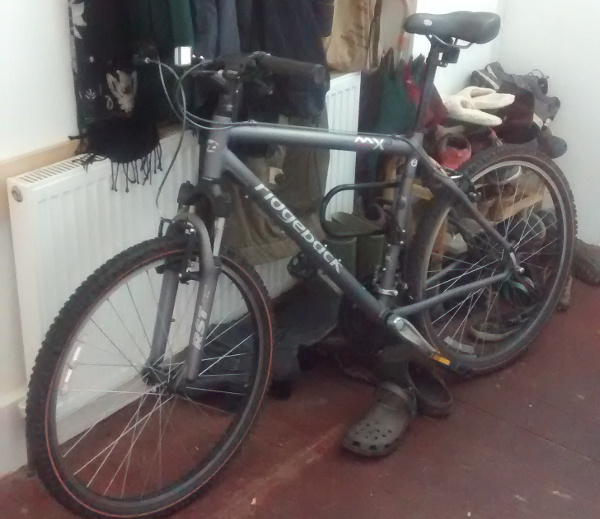
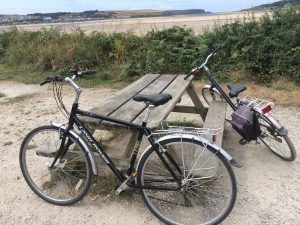
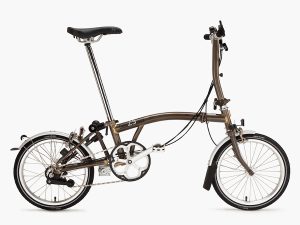
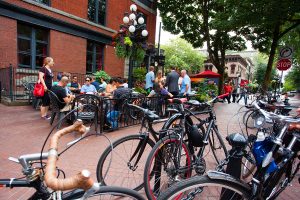
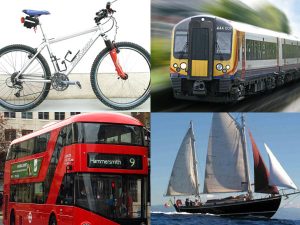
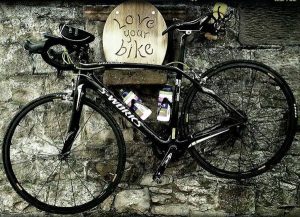
1 Comment
Great Stuff Dave, we need to get many more people back on bikes. I love the quote (unknown source) “The bicycle is a simple solution to some of the world’s most complicated problems”. The electric assist bike also makes cycling more practical for many more people for many more journeys so is a real game changer.
Steve (@BicycleLifeUK) and @wfaoxford.org)
PS for some reason the box in your form won’t accept http://www.wfaoxford.org as a URL